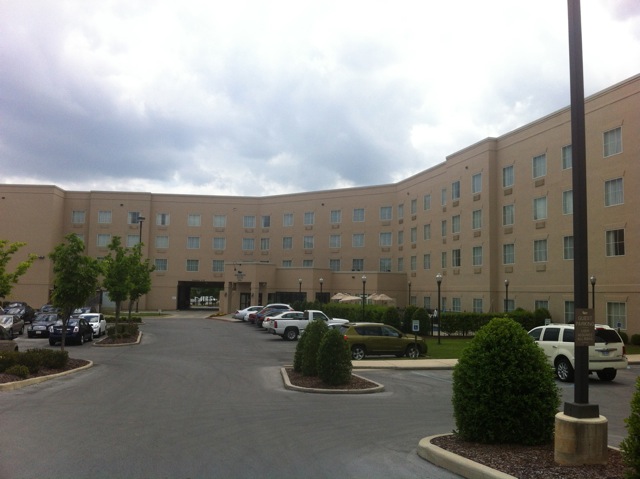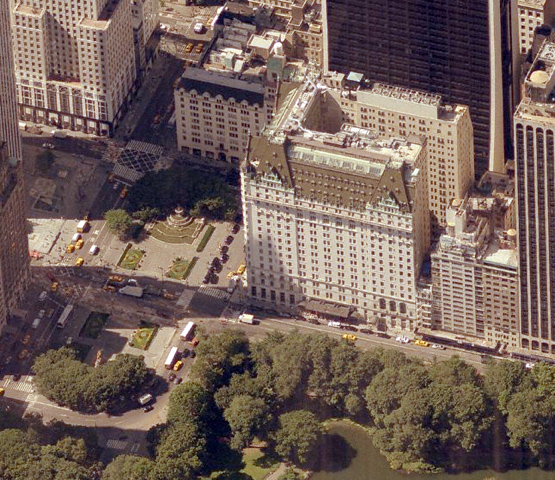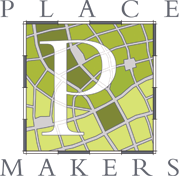A Placemaking Journal
Get Your Hotels into a Walkable Town Center!

Series Overview
While walkable mixed use town centers may not be the *easy* choice for the asphalt guy, the engineer, or even the developer who has to attract tenants to an environment they may not be as used to… they are certainly becoming best practices for sustainable community development. More importantly, they are quickly becoming a market favorite and a valuable amenity to their adjacent (and integrated) residential neighborhoods. Too often, however, municipalities and developers choose only to commit to this model halfway, viewing it as a niche market with limited potential where quaint mom and pops struggle away (you know, that one-off new urbanist development at the edge of town), while the “real stuff” happens in large conventional single-use centers down the street.
This lack of commitment allows many of the essential ingredients of a successful walkable town center to get sucked into car-focused single-use centers (the easy place to put them) so that everyone can make excuses as to why the poor mixed use village struggles and we still have to do the conventional stuff until oil hits $10 a gallon.
Here begins the first in a Back of the Envelope series where I will make the case for getting those ingredients out of single-use districts and into walkable mixed use town centers. While this may challenge some who think they’ve done their green duty with their one-off TND development down the street, my hope is that it will help make the more important case of focusing our limited economic energies onto places of enduring value, rather than continuing on the big race-to-the-bottom that is the big-box shopping center.
The Hotel: 24 hour Mixed Use Value
This week, we’ll start with the hotel. Now, anyone who travels has likely witnessed the competition-driven rise in chain hotel sophistication over the past decade. With six pillow choices, hot cookies, and free beer, these guys are going all-out. But what happens when you go out the front door? Too often, new hotels are plunked down into the worst of our automobile-oriented sprawl where you take your life into your hands just to walk down the street to the Applebee’s for some jalepeno poppers. While there are some limited cases where you might locate a hotel in this environment, in most cases it is a colossal wasted opportunity. Fortunately, the value-capture of diverting your town’s chain-hotel investments into a walkable town center is symbiotic. Here’s why I like them there:
– A Destination by Foot: For the guest, the obvious amenity is the ability to leave the hotel after you’ve checked in to find an engaging pedestrian environment with lots to eat, drink, and entertain yourself with. If you think about it, I find almost no cases where a weary traveler might want to get back into their car (if they even have one) to go in search of food and entertainment in a strange town. Oh, and when you get back to your room, draw the curtains… its ugly out there.

– Captured Market: The flip side of this is that you are bringing the retail side of your town center an ever-changing captive market. It’s 150 rooms of foot traffic, and it’s valuable.
– Inherently Mixed Use: While one challenge of walkable town centers is to get the vertical mixed use to pencil, the hotel offers a concentrated mixed use building complete with a commercial base (often a restaurant and bar at the base) and 150 plus rooms up above. This is great for shaping urban streetscapes and activating public space. And while your hotel patrons might go somewhere else for dinner, know that you will get non-patrons visiting your food and beverage amenities — something that may rarely happen in single-use environs.


– 24 hour population: The hotel offers a built-in 24 hour population bringing life to your town center streets and putting eyes onto the street.
– Iconic Building: While much of your town center may be 1-3 stories, the hotel often has no problem climbing up to four or more stories. With such an investment, the hotel can be an iconic, or at least highly visible structure within the town center. Add some funky signage onto that tower element that us urban designers like to throw into our plans, and you have far-off visibility that rivals the neon highway sign.
– Infrastructure: And lastly (although I’m sure there’s more), dont forget the efficiencies you get with any land use in a mixed use center when you no longer have to build gigantic car-only streets linking disconnected parking lots in transit-repellent wastelands.



Accommodating the Chain Model
As mentioned before, competition is fierce among hotel chains and many of them have their model of operation. But aside from branding, much of this is actually focused within the building. The outside is relatively simple: A shopfront for your food and beverage, a semi-private pool on the sunny side, a port cochere to check in, and a convenient parking lot. And while the hotels have a template for the conventional suburban location, use the rationale above to help motivate them to revisit their model. And know that this is no pipe dream. One of my favourite stories now unfolding is the Village of Providence in Huntsville, Alabama, where a number of hotels are emerging in their walkable town center… and there are many more. Meanwhile, here’s a few ideas to help get you started:
– Get your restaraunts and bars in shopfronts on the commercial street. You’ll also want a branded entry to the hotel here, but it doesn’t have to be the main entrance.
– Just like any use, locate your long-term parking within the block. Good signage, valet service, and directions from the concierge make this an easy task.

– Consider a mezzanine level (second storey) to get your fitness center and meeting rooms overlooking the commercial street.
– If you set aside some of the on-street parking for your hotel port cochere, and bring an awning out over the sidewalk, you have the classic Manhattan hotel scene. But that may not be for everyone.
– Consider a turn-in to your port cochere from the main or side street. If it goes through the building (like a tunnel), you have a weather protected port-cochere and it’s under the hotel’s full control. And, of course, link this tunnel to the in-block parking and back-of house services. This is how the first hotel in the Village of Providence handled it.
– Consider a dedicated court for your port cochere like Legacy Town Center outside of Dallas. Again, you get full control, but unless you are a larger hotel, it may be difficult to pull this off, and you may create a large hole in the continuity of a commercial street.
– And lastly, if you want to get real urban, consider locating on a square where your hotel can take advantage of the parking and traffic circulation of one leg of the surrounding street. The most celebrated example, of course, is the Plaza Hotel in Manhattan.

Have any other examples or ideas? Post them here! We all want to hear them.
Links for the whole series:
Get Your Hotels into a Walkable Town Center!
Get Your Shops into a Walkable Town Center!
Get Your Multifamily into a Walkable Town Center!
Get Your Offices into a Walkable Town Center!
–Geoff Dyer
If PlaceShakers is our soapbox, our Facebook page is where we step down, grab a drink and enjoy a little conversation. Looking for a heads-up on the latest community-building news and perspective from around the web? Click through and “Like” us and we’ll keep you in the loop.






